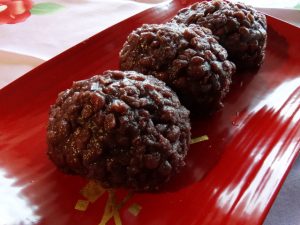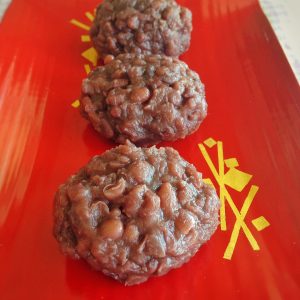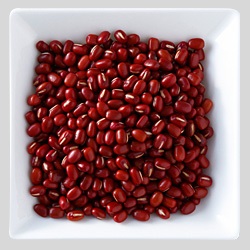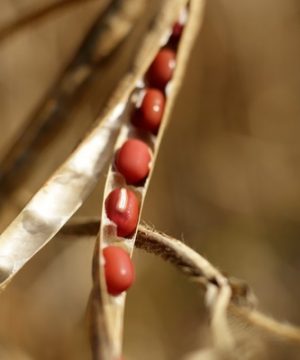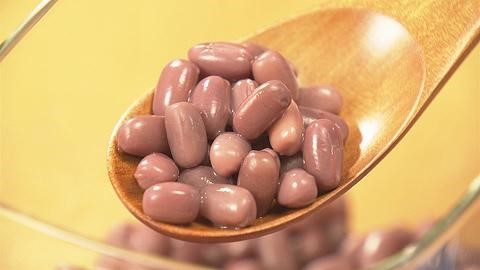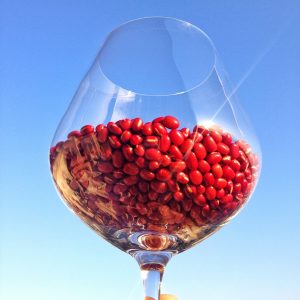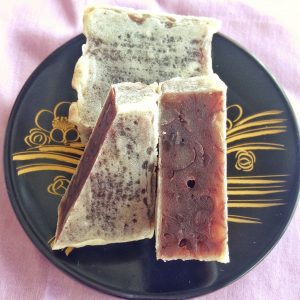
This is one of the wagashi(Japanese traditional sweet)
They are made from anko(red beans taste) which was dipped
into the very light batter and cooked. It has the shape of hexagon.
The definition of “tusba” is the circle thin plate which separate
the handle from the sword, so called a hand guard.
The origin of this sweet was yakimochi(cooked rice cake) Back to the Edo period( 1603~1868), this sweets used to be sold in Kyoto Kiyomizu. They melted rice flour with water and then covered red bean pastes with it. After that they cooked on the iron or bronze plate and sold in the food cart. The majority of customers were the common people and it was one of the most popular sweets at that time. However, because of the lack of mochi(Japanese rice cake), some of them were furious about that, saying that this was anything but mochi. This is why they changed the name of it, replacing the word “mochi” with the word “gin tsuba” because of the shape and the color.( gin means silver)
In this way, the popularity of this sweets skyrocketed across the country. In Edo (Japanese capital at that time), they started baking the every six side of it, which turned the color from white to yellow. Since gold matters more than silver, they renamed this sweet, “ kin tsuba” (kin means gold). This “wagashi” used to be for only the commons, but as this sweet permeated through the county, more and more store started selling it. There are still so many traditional stores which sell this sweet.
This is very personal story though, this Japanese sweets is very special for me. This was my grandfather’s favorite for all time. It doesn’t taste too sweet but the existence of read bean taste is strong. For my grandfather, who likes reading books, this was the best sweet to eat while reading books because it’s not sticky and has slight sweetness. This sweet reminds me of my father. He passed away when I was ten years old. Since then I offered this sweet in front of his grave.
This sweet begun as “ gin tsuba” in Kyoto and was changed the name to “ kin tsuba” in Tokyo and then permeated across the county as the latter name. Even if you are not into so sweet wagashi, I believe that you will like it for sure.
